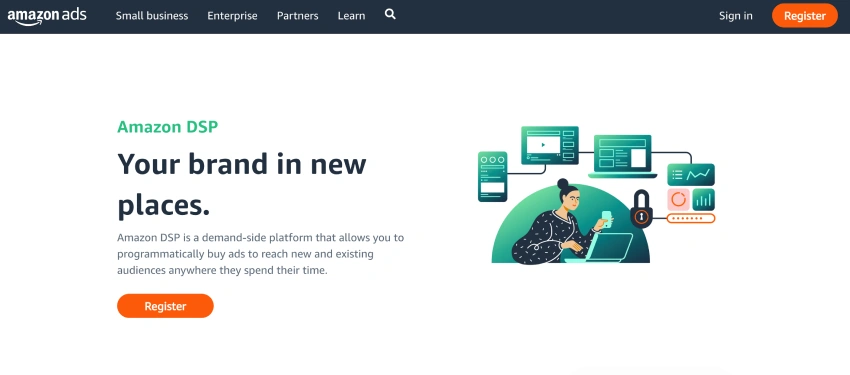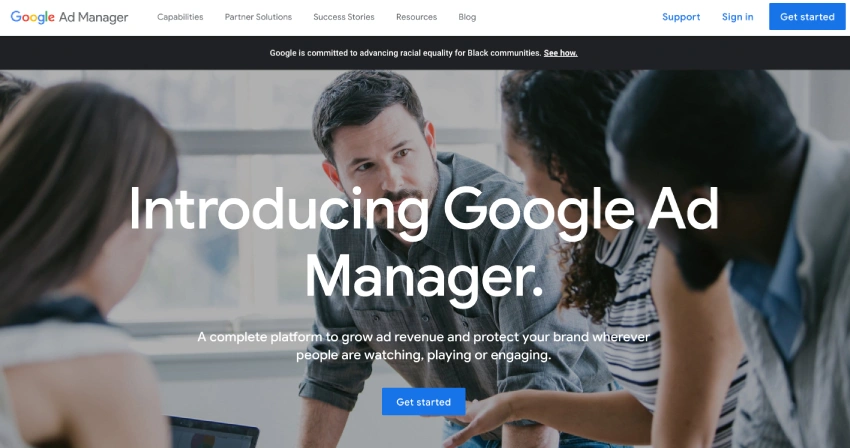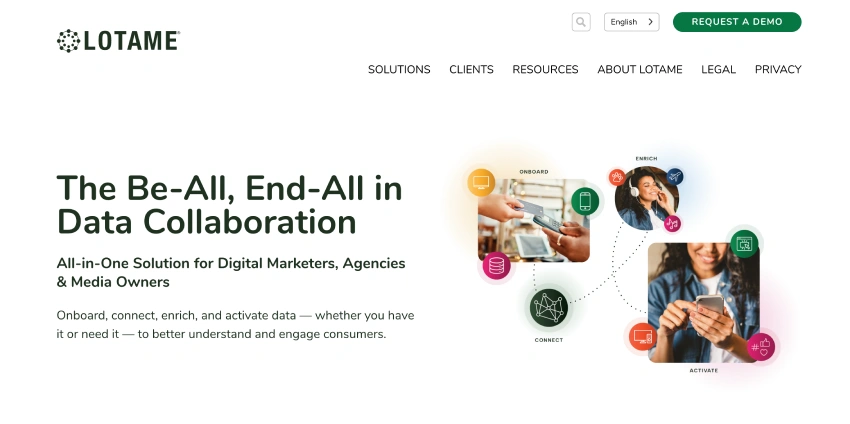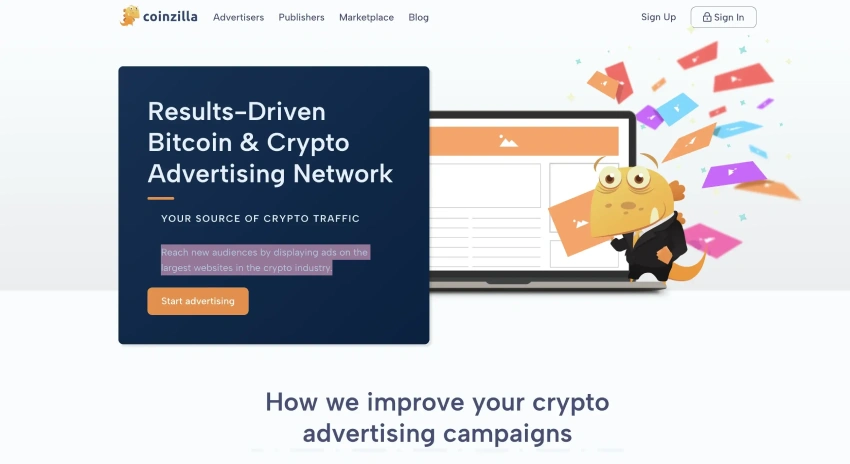Top AdTech Solutions You Must Try Out
As we all know, AdTech is the umbrella term for different software tools that help brands and agencies manage their advertising space needs, from purchasing or selling to uploading content and monetizing these advertising efforts.
Moreover, since the AdTech market is blooming and thus is projected to reach $2.9 trillion by 2031, we cannot oversee its use and power in the advertising industry.
So, the question remains: what AdTech solutions should you choose to increase your business revenue? We are discussing this today, whether you are an advertiser or publisher, as the following AdTech solutions suit both parties.
Let’s get into it!
Table of Contents
7 Types of AdTech Solutions for You
We must briefly mention each type of AdTech to discuss the available AdTech solutions, as this could upskill your advertising game and see high ROI. Also, you can check our article on AdTech and MarTech to learn the difference between them.
Before going further, remember that AdTech and MarTech aren’t the same thing.
1. Demand-Side Platforms (DSPs)
DSPs are programmatic advertising platforms that allow advertisers to buy ad space through automated processes across multiple ad exchanges. Therefore, advertisers place automatic bids on video, display, mobile, and search ad inventory from various publishers.
But here’s the catch: instead of buying inventory from the publisher, they buy their ability to reach specific audiences, based on the DSPs’ targeting abilities, from multiple publishers.
Now, let’s find out what the market has to offer!
Amazon DSP

We know that Amazon is considered the retail king, and for those who didn’t know, it also has a DSP platform on which its media buyers can choose between managed and self-service options.
Yet, depending on the country, those opting for the managed service must ensure a minimum spending of $50k.
Amazon DSP Features:
- From video, display, and video ads to device ads, Amazon lets its users reach their audiences through various formats on multiple Amazon devices and services.
- Amazon offers creative freedom through various options, such as the video creative builder. This way, you speak directly to your audience in a creative manner that draws attention and possibly leads to a higher ROI.
- Of course, you’ll need to examine metrics and measure the success of your campaign through effective analytics, such as Amazon-specifics, in addition to industry standards.
- Be sure to optimize your audience while comparing your insights to your market research and combining them with A/B testing to ensure well-deserved results to refine your audience.
2. Supply-Side Platforms (SSPs)
SSPs, or Supply-Side Platforms or Sell-Side Platforms, are adtech solutions that manage publishers’ ad inventories and allocation. This allows publishers and media outlet owners to sell their ad space effortlessly without entering the traditional selling negotiation process. These platforms can increase revenue by balancing inventory across multiple ad networks using ad mediation.
What is striking about this adtech platform is that everything is automated, just like the DSP, enabling publishers to yield multiple offers by being connected to DSPs and Ad Exchanges.
One notable example of a robust SSP could be Sevio Ad Manager, which steals the spotlight with impressive features even though it is relatively new on the market.
Sevio Ad Manager SSP

Sevio Ad Manager is an adtech solution that offers an all-in-one ecosystem for publishers looking to monetize their web and app by selling their ad inventory quickly. Moreover, Sevio Ad Manager is a powerful SSP with a user-friendly interface, as you all ask for, and advanced features to cater to your business’s in-depth and specific needs.
Sevio Ad Manager Features:
- This SSP offers its publishers a comprehensive overview of their offerings, including the status, number of active ad zones, and others. As such, everything is on hand, and there’s no point in roaming around.
- When discussing prices, Sevio offers three primary pricing models, which are also the most popular in the market. You can choose between CPM, CPC, and CPD, each with advantages.
- But Sevio knows how to serve its publishers better if we look at the supported creatives. As such, it supports different creatives, from static ads to HTML or JavaScript and customized ones, besides IAB standards ad sizes.
- Then, you can also set different priority tiers for each creative so you can select which ads to be seen first. Time-efficient, cost-effective, and easy to manage, right?
- Moreover, with granular audience targeting, precise segmentation, and detailed statistics, Sevio is by your side. You can easily tackle your campaign to ensure well-performing ads, helping you make informed decisions.
So, until now, we have learned that DSPs are for advertisers and SSPs are for publishers, but each goes through an Ad Exchange. But what is an Ad Exchange? Let’s find out!
3. Ad Exchange
Ad Exchanges are virtual marketplaces that connect advertisers and publishers to buy and sell ad space without an intermediary. The buying process is done through Real-Time Bidding in which multiple bids are placed for an available ad inventory, and the highest bidder wins.
Therefore, Ad Exchanges work based on the demand and supply system, in which publishers want to sell their ad space, and advertisers want ad units with good visibility, high traffic, and increased impressions.
Google AdX

Google steals the thunder regarding ad exchanges since it is the oldest and most well-known. Initially called DoubleClick Ad Exchange, Google AdX now serves international markets, offering open, preferred, and private auctions.
Therefore, publishers already enrolled with Google Ad Manager could also opt out of AdX, as it is built into the platform. However, due to rigorous entry barriers, Google AdX isn’t addressed to small publishers.
Google AdX Features
- Google AdX is offering for an international advertiser’s market, so you can select what seems best, thus reaching broad markets.
- Your ad inventory is purchased and sold by impressions, which leads to higher CPMs.
- Like the other adtech solutions, Google AdX offers multiple creative formats, such as video and display ads.
4. Agency Trading Desk (ATD)
Trading desks are a bit more complex. They are either a tech or a set of services a media agency provides for planning, buying, managing, and optimizing advertising campaigns.
One significant advertising benefit is the lower cost of managing campaigns compared to doing it in-house. And even though it seems similar to what a DSP does, ATDs hire developers, account managers, and other specialty professionals for the agency’s clients.
Therefore, advertisers won’t get direct access to the available media inventory by using an ATD since they buy and sell the space later.
One thing is sure: since their inception, ATDs have changed considerably. As such, many leading ATDs have outgrown their position, acquired other ad tech companies, and become something more than simple ATDs.
However, to give a rough idea, between 2019 and 2020, 74% used an agency trading desk (ATD), compared to 71% that used a DSP.
InterPublic Group

As mentioned, ADTs now offer multiple services in one, which is the case with InterPublic Group, a global marketing solutions provider. Since it has various companies, InterPublic specializes in advertising, marketing communications and planning, media, public relations, digital marketing, and more.
5. Ad Servers
Ad servers are hosted software tools used in advertising by publishers and ad networks to create and manage ads. As the name suggests, these software tools are hosted within a server and help publishers display ads selectively based on predefined criteria.
Another beneficial aspect is reporting, as it generates various reports based on impressions, clicks, CTR ratio, etc. Therefore, publishers that use ad servers can better strategize their ad campaigns according to their target audience and behavior.
OpenX

OpenX addresses all publishers with big audiences and has multiple ad campaigns monthly, thus becoming a leading player within its category over the years.
Indeed, the cost of using an ad server can be pretty high, yet with OpenX’s features, it is worth it. This ad server lets its customers micro-target and offers detailed historical analytics data to better assess their decision-making process.
OpenX Features
- OpenX is open-source (meaning anyone can see the source code), has an open API, and is the largest within its sector. As such, publishers enjoy increased flexibility.
- OpenX is fast, secure, and scalable and offers an enterprise solution for advertisers, publishers, and agencies.
- This ad server can be easily integrated and provides multiple formats to publishers to manage their ad campaigns.
6. Data Management Platform (DMP)
A data management platform (DMP) could be the answer for those looking to better understand their customers. Since it collects and organizes first, second, and third-party data on target audiences, building customer profiles, DMP helps publishers deliver better, more specific, and detailed ad campaigns.
However, these customer profiles can be available to other types of adtech solutions, such as DSPs, SSPs, and others, to deliver highly personalized, cross-channel content, which could ultimately lead to more purchases.
Lotame DMP

Lotame is a robust DMP that gathers, stores, organizes, and activates data in real-time and from multiple sources. Therefore, it could help you better understand your customers so that you can make more data-driven decisions and address their needs based on customer segments.
Moreover, Lotame collects all its data from social media, various mobile apps, email, web searches, campaign interactions, and more. But what we think is remarkable about this DMP is that you can compare your data against Lotames third-party and draw key insights from it.
Lotame Features
- Lotames’ onboarding is easy, as it unifies all fragmented vital data points into a complete picture, allowing a comprehensive perspective on the customers.
- Through this DMP, your business could expand, helping from the early stages of prospecting until monetization with the help of other technologies, such as machine learning and others.
- Even though it collects data, Lotame ensures global compliance with other privacy management tools.
7. Ad Networks
Ad networks stand between publishers and advertisers, simplifying the selling process by consolidating bids and inventory from various exchanges. However, they must purchase available ad inventories from publishers and sell them to advertisers.
Moreover, the ad network is the mediator that offers a win-win solution since it offers advertisers the right impressions to the right buyers and helps publishers reach their ad campaign goals.
But it isn’t a one-size-fits-all, and often, ad networks could have various roles.
Coinzilla Ad Network

Coinzilla is an ad network solution that offers advertising services for all crypto, blockchain, and fintech projects by offering ads directly into their publisher networks. Therefore, Coinzilla offers high-quality leads, top-notch security features, and cost-effective campaigns that increase advertisers’ and publishers’ revenue.
As customer support and satisfaction are mandatory, Coinzilla has a professional team by its side, from account managers, designers, and content writers, to better serve its customers and reach its target audience.
Coinzilla Features
- Coinzilla’s niche is the key aspect, as advertising crypto, blockchain, and Web3 projects are challenging.
- This ad network offers multiple campaign types, from display to native and popunder, each with various formats.
- Flexible campaign budgeting is required, and Coinzilla knows best to optimize its ad delivery based on cost and performance.
- After campaign optimization, you must look into reporting, right? What better way than using Coinzilla to track and measure your marketing efforts and gain crucial insights on impressions, clicks, click-through rate (CTR), eCPM, and cost?
So, as we’ve learned more about different types of adtech solutions, what they are, and proven track examples, let’s move along and find out how to choose such platforms and, thus, what critical aspects you should be aware of.
How to Choose the Best Adtech Solutions for Your Business?
Learning how to choose the best adtech solutions for your business is mandatory, and no, it doesn’t have to be so technical. However, those criteria also matter.
But let us explain better by breaking it down.
- Start by defining your goals: What do you want to achieve with your ad campaigns? Increase brand awareness, drive website traffic, or generate leads? Knowing your goals will steer your selection process.
- Identify your target audience: Understanding who you’re trying to reach will help you choose solutions with the right targeting capabilities. Consider demographics, interests, and online behavior.
- Consider your budget and resources: Ad tech solutions can range from basic to complex, with varying costs and resource requirements. Choose an adtech solution that fits your budget and your team’s expertise.
Then, go into specifics and technical features to consider:
- Programmatic capabilities: Look for solutions that offer programmatic ad buying and the first vs. second-price auction, especially if you plan on buying ad space at scale.
- Data management: Choose a solution that allows you to collect, manage, and utilize data effectively for audience targeting and campaign optimization.
- Reporting and analytics: Robust reporting tools are crucial for tracking campaign performance and making data-driven decisions.
- User interface and ease of use: The platform should be user-friendly and intuitive, mainly if your team has limited technical expertise.
- Scalability: Consider your future needs. Will the solution help your business grow?
By including these factors, you could set your business up for success and choose the best adtech solutions for your business needs.
Final Thoughts
The ad tech landscape can be complex, but you can significantly boost your advertising efforts with the right tools. By understanding these solutions and how they work together, you can make informed decisions to achieve your advertising goals.
Look for adtech solutions that offer efficient programmatic buying, robust data management for effective targeting, and insightful reporting to optimize your campaigns. A user-friendly interface and scalability to grow your business are also essential factors.
So, leverage the power of adtech solutions and take your advertising campaigns to the next level!